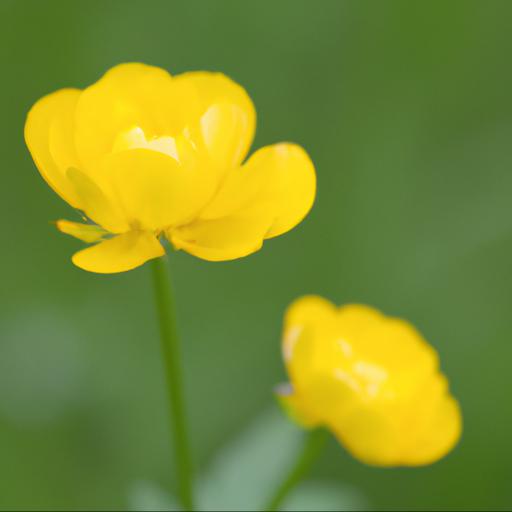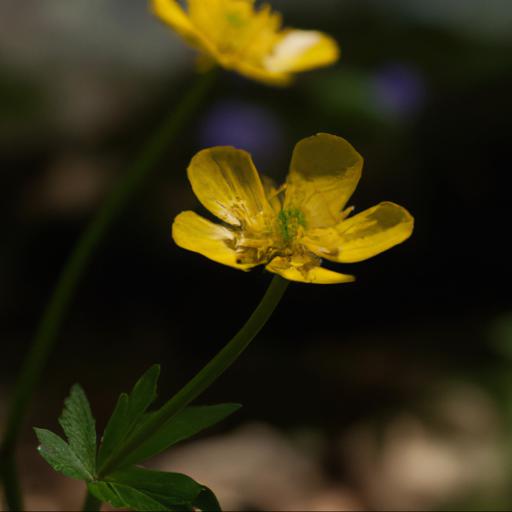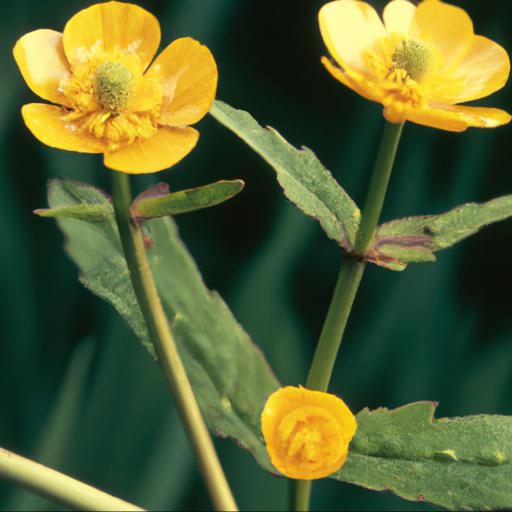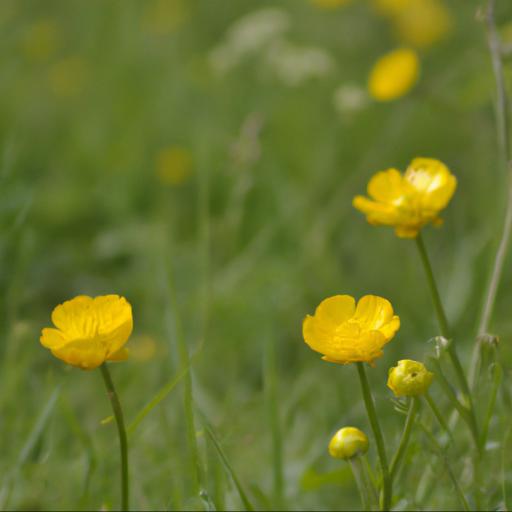The buttercup family, also known as Ranunculaceae, is one of the largest flowering plant families in the world. With over 2,000 species, it is found in a variety of habitats ranging from mountains to meadows, forests to wetlands. Buttercups are known for their bright, yellow flowers and long, green stems.
They are an important food source for many species of birds and insects, and some species are even used in traditional medicine. In addition, the buttercup family includes some of the most beautiful and interesting plants, from delicate alpine species to towering trees.
Whether you are looking for a unique addition to your garden or a source of food for wildlife, the buttercup family has something to offer.
Characteristics of the buttercup family

The buttercup family, or Ranunculaceae, is a large family of flowering plants that encompass a variety of different plant species. This versatile family can be found in many different habitats, from forests, meadows and mountains, to marshes, lake edges, and even dry grasslands. With over 2,500 species spread across more than 70 genera, the buttercup family is one of the most genetically diverse plant families on the planet.
Despite its diversity, the buttercup family has several identifying features which make it distinct and immediately recognizable. Perhaps the most conspicuous of these is its bright yellow flower, which is found in many varieties.
As the name implies, the flowers in the buttercup family are usually a bright yellow, with some species having petals of a white, pink, or purple hue. The flowers of the buttercup family attach to the stem of the plant by way of an ovary, and typically bloom in the spring and summer months.
Another distinctive aspect of the buttercup family is its unusual foliage. The evergreen leaves of the buttercup family grow in a segmented pattern, with sharp-edged leaves driving away from the stem in a star-like formation. The leaves tend to grow in pairs and often feature an almost lacy texture.
Their unique shape is scientifically known as ‘digitately compound,’ and it can be easily seen in many of the family’s more popular plants, such as the Ranunculus, Trollius and Consolida species. The buttercup family is a delightfully diverse group of plants that have remarkable features, beautiful blooms and unique foliage. With so many different species, there’s sure to be something to fit every flowerbed.
Whether you’re looking for a vibrant jewel-toned flower or a simple, evergreen succulent, you’ll find it in the buttercup family.
Common species of the buttercup family

The Buttercup family (Ranunculaceae) is a large plant family and contains some of the most radiant and gorgeous flowers found in gardens across the UK. The family consists of over 3,000 species that range from traditional garden favourites such as Clematis to ground-covering Anemone, to Aquilegia and Trollius, commonly known as Globe Flower.
Many of the species from the Buttercup family are known for stunning bright yellow flowers which are captivating and make for ideal showpieces in the garden. Ranunculus is a striking species that features dazzling buttercup blooms in shades of yellow and white and is sure to be the show stopper wherever it is planted. Other popular choices include Aquilegia, which bears delicate and airy blooms of yellow, pink, blue and white; and Trollius, which displays unique globe-shaped flowers to create a captivating summer display.
No matter which species of the buttercup family you choose, most offer easy to maintain plants that will provide a stunning display in the garden year after year. If you’re looking for something that will bring a bright splash of colour to your garden, you can’t go wrong with the Buttercup family. It not only looks beautiful, but it’s also incredibly hardy and reliable, meaning it can fit well into almost any garden.
Uses of the buttercup family

The buttercup family (Ranunculaceae) is a diverse and intricate group of flowering plants that encompass a broad range of shapes and sizes. They include some of the most beautiful and fragrant of garden flowers such as the poppy and larkspur, to the more arcane but important members of the family such as monkshood and anemone, to more humble cousins like wood anemone and ground ivy. The buttercup family has vast application in our gardens and parks, with their diversity and vibrant colors they bring a life to our outdoor spaces.
The towering poppy, with its delicate, wispy petals, adds a graceful touch to garden beds, while monkshood adds a unique blue shade to ornamental borders and hedgerows. Larkspur is great for attracting pollinators as its flowers provide a rich source of nectar, while also providing an earthy contrast to the purple or pink of its petals.
These plants are also useful for wildlife habitats and meadows, providing an important source of food for birds, insects and mammals. Anemone, for example, provides a rich source of nectar for bees and other pollinators, while the low-growing wood anemone and ground ivy offer a great range of lush groundcover, creating perfect conditions for breeding species and providing them with protection from predators. All in all, the buttercup family has a great deal to offer when it comes to making our landscapes and gardens as beautiful and productive as possible.
Whether you’re looking for a colorful addition to brighten up a bed or hedgerow, or for something a bit more unusual like monkshood, it’s definitely worth exploring the array of options provided by the buttercup family.
Interesting facts about the buttercup family
As a UK garden expert, I have a few interesting facts to share about the amazing buttercup family. The buttercup family encompasses a vast number of plants that are found worldwide, both in gardens and natural areas. Everything from the small, familiar buttercups of grassy meadows to the large, exotic species of the tropics are part of this family.
The buttercup family, also known as the Ranunculaceae, is made up of almost 2,500 species of annuals, perennials, biennials and shrubs. These plants breathe life into gardens year-round thanks to their varied blooming times and lengths, their diverse shapes and forms, and their wide range of colors.
No matter the size, species, or bloom time of these remarkable plants, one thing stands out: their unmistakable flowers. Featuring bright yellow petals surrounding a bright yellow center, these beautiful blooms appear from spring through fall, producing pollinators like bees and butterflies.
Some of the most popular members of this family include clematis, anemones, buttercup, monkshood, delphiniums and columbines. These vivid and durable plants are easy to care for, thrive in direct sunlight, can withstand occasional draughts and love areas with moderate moisture. But as convenient as they are, it’s worth noting that many of them are toxic if consumed.
So be sure to keep this in mind when you’re growing them around pets, children and curious wildlife. With a variety of shapes, sizes, colors and bloom times, there’s a buttercup to suit every garden year-round.
If you’re looking to give your garden a little boost this season, consider adding the delightful members of the buttercup family to your landscape.
Our video recommendation
Bottom Line
The buttercup family is a large group of flowering plants that includes over 2,000 species. These plants are found in many different habitats, from meadows and forests to mountains and deserts.
They come in a variety of shapes, sizes, and colors, and are often used as ornamental plants in gardens. Buttercups are also known for their bright yellow flowers, which are often used in bouquets and for decoration. They are a great addition to any garden, and make a beautiful display of color and texture.
FAQ
What is the scientific name of the buttercup family?
The scientific name of the buttercup family is Ranunculaceae.
How many species of buttercups are there?
There are over 250 species of buttercups worldwide.
What are the common characteristics of the buttercup family?
The common characteristics of the buttercup family are bright yellow or white flowers with five petals, sepals, and stamens, and a basal rosette of leaves. They also have a milky sap and a deep root system.
What type of environment do buttercups prefer to grow in?
Buttercups prefer to grow in moist, well-drained soil in sunny or partially shaded areas.
What are the different colors of buttercups?
Buttercups come in a variety of colors, including yellow, white, pink, and purple.
Are buttercups edible?
No, buttercups are not edible and can be toxic if ingested.

